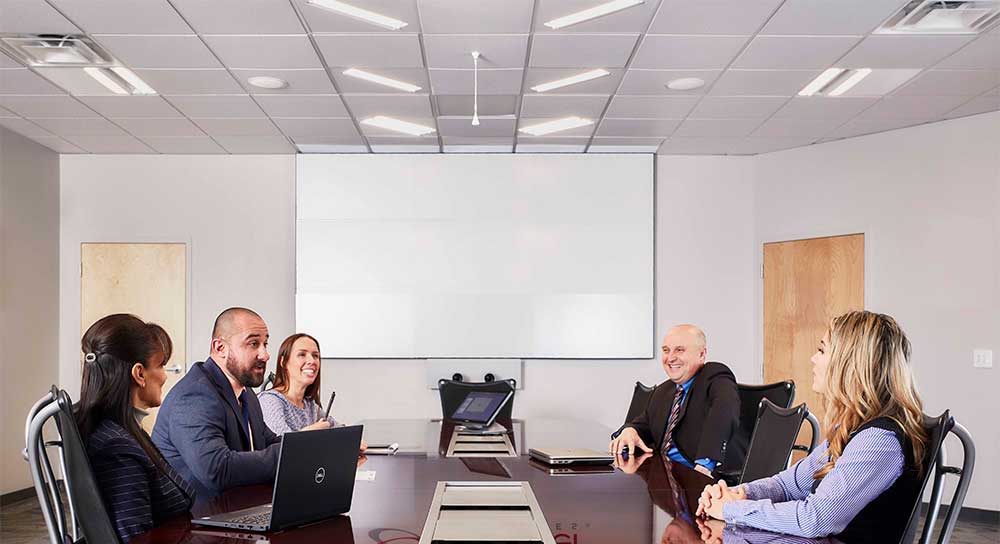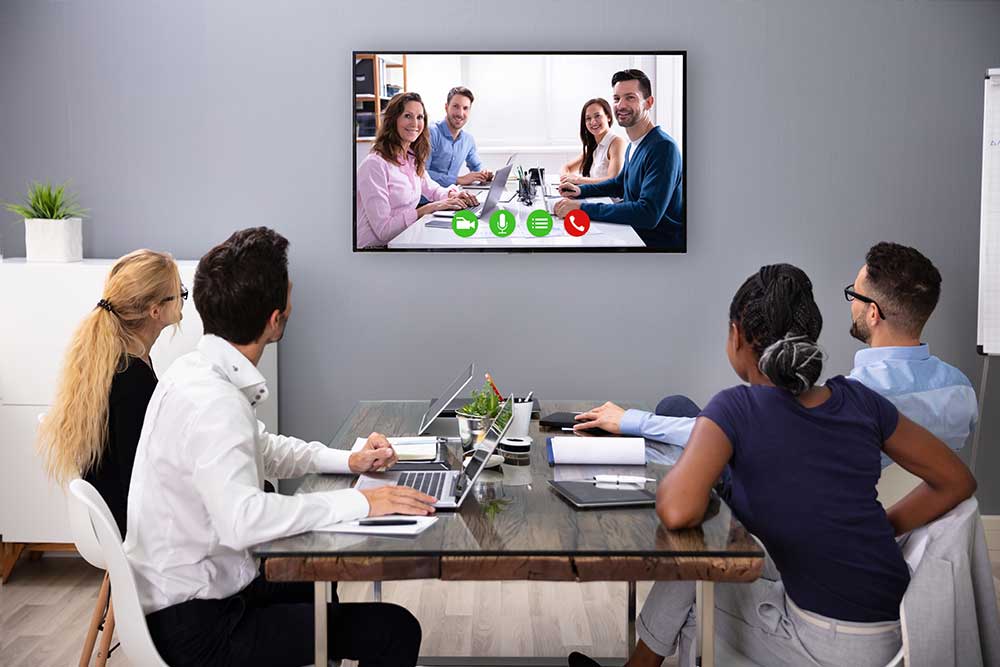
Technology was changing the commercial office workspace long before the pandemic hit. And now, as teams routinely collaborate via remote and in-person meetings, exciting new trends are redefining the office landscape. Two examples are huddle rooms and hoteling.
Much like the football term for which it is named, a huddle room is a space designed for small team meetings or work sessions. Due to its size, a huddle room allows for more intimacy and efficiency than a large conference room.
Too often, remote workers can feel left out of a conference room meeting. However, with a huddle room, team members can see each other face to face whether they are there in the room or video conferencing from home or another office.
Another growing trend in the commercial office workspace is hoteling. This concept eliminates assigned desks or offices, instead allowing team members to reserve in-office workspaces when and where they need them. In other words, workers reserve their workspace in advance just as they would a hotel room.
Given that many of today’s professionals are working from home or following a hybrid work schedule, hoteling is a way to foster more flexibility and efficiency within the workplace, providing a sort of “free-range” office experience that inspires creativity.
Instead of maintaining a space that sits empty while a team member mostly works from home, hoteling allows other members to reserve and use that space. For example, that unused office might make an excellent huddle room.
Also, a reconfigured, more efficient workspace can add up to reduced square footage, which means less money spent on utilities and rent.
Lighting is Key to Shared Office Spaces
One of the primary factors that successful huddle rooms, hoteling, and other semi-private workspaces have in common is their need for optimal lighting.
As we rely more and more on video conferencing and video presentations in our meetings, the amount of light and the type of light we use is essential to success. And, contrary to popular belief, brighter isn’t always better.
Just like our eyes, cameras need light to create a good image. Video cameras produce a lower-quality image when there’s too much light, inadequate light, or light coming from the wrong direction.
Here are four key factors associated with high-quality lighting:
- Facial expressions. In order for remote team members to be on an even playing field with both in-person and other remote workers, we must be able to see their faces clearly. Too much or too little light can cause faces to be shadowed and facial expressions lost or skewed.
- Distractions. Harsh lighting can produce annoying glare or reflections that take attention from the person speaking during a video call. When lighting clearly illuminates participants’ faces, everyone can better maintain focus and engagement.
- Colors. Poor lighting — often caused by light sources that are the wrong temperature for the space — can alter the true colors of a room and the objects in it. On the other hand, proper lighting allows remote meeting participants to see things as they really are.
- Grainy quality. The proper lighting eliminates “grainy” videos and underexposed digital images. Appropriate lighting also can help reduce eye fatigue and headaches for everyone involved.
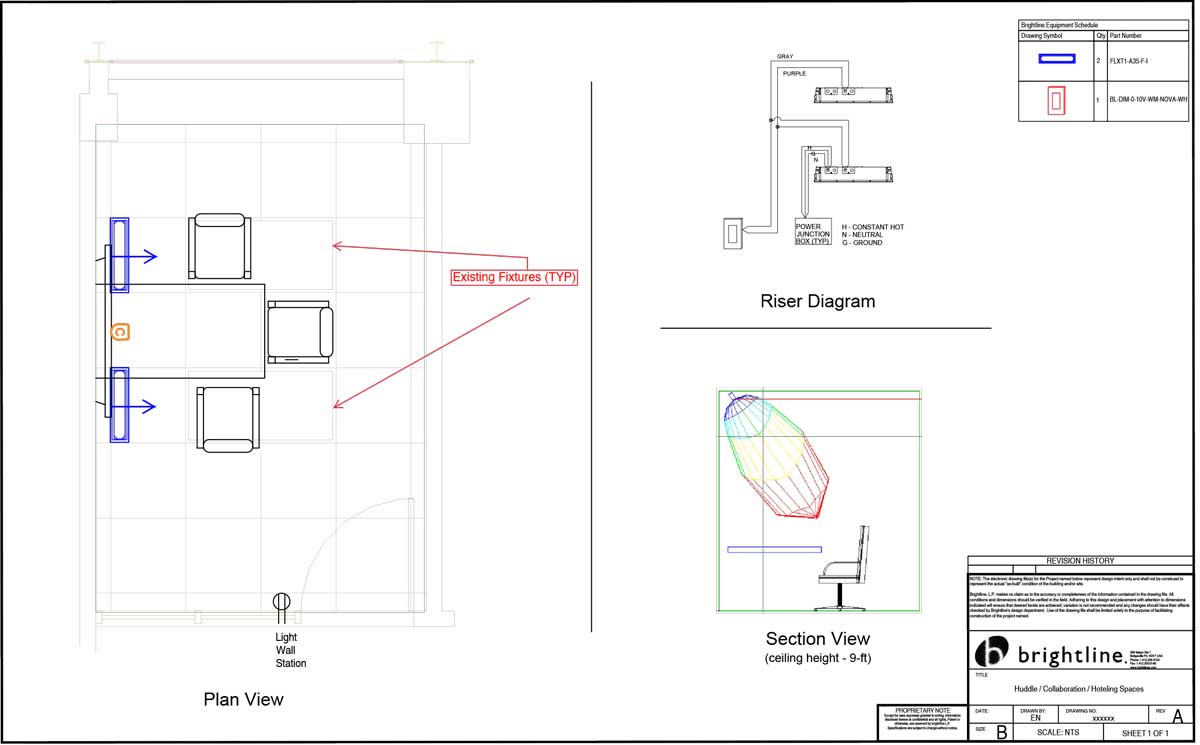
Huddle room lighting diagram from Brightline is available in the Huddle Room Lighting Kit link below.
Brightline: Enhancing the Presentation of Visual Images.
Brightline, one of the leading lighting manufacturers we represent, specializes in the lighting technology and hardware necessary to support today’s new flexible office spaces. We want to highlight here two Brightline products that will serve your team members well as they collaborate in huddles or hotels, in-person, or on a screen.
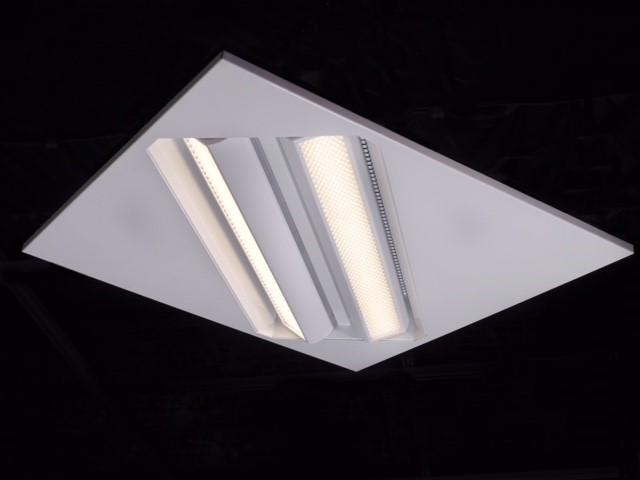
Flex-T
The Flex-Ts’ patented articulation feature makes this the only fixture that can be precisely rotated into a desired position during conferencing and then returned flush to the ceiling between sessions or for general task lighting. Fixtures are available with manual articulation and a range of dimming protocols for applications that include business and governmental videoconferencing, e-learning, telemedicine, Internet video streaming, and nontraditional studio environments.
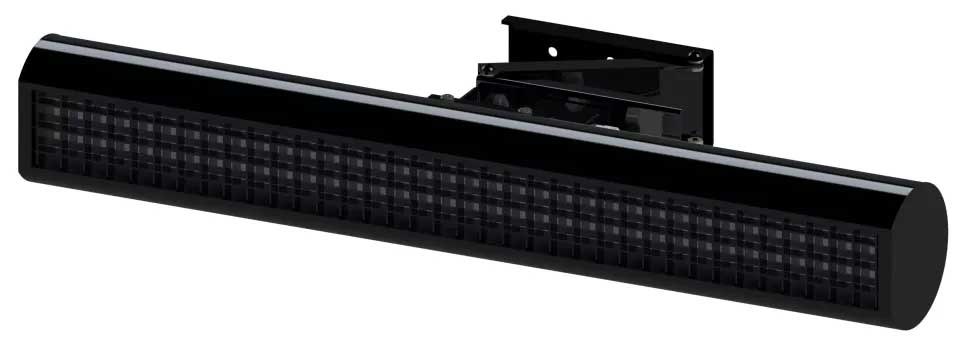
The cMe2 Huddle Room Light
You can turn any room into a vibrant communications center with Brightline’s cMe2. The cMe2 features onboard dimming, flawless color rendering, and a sleek black finish. Hardware for credenza mounting comes with the CMe2, and wall mount hardware is available separately.
Budget-friendly and easy to set up, the cMe2 allows your team to “huddle up” with ease and clarity.
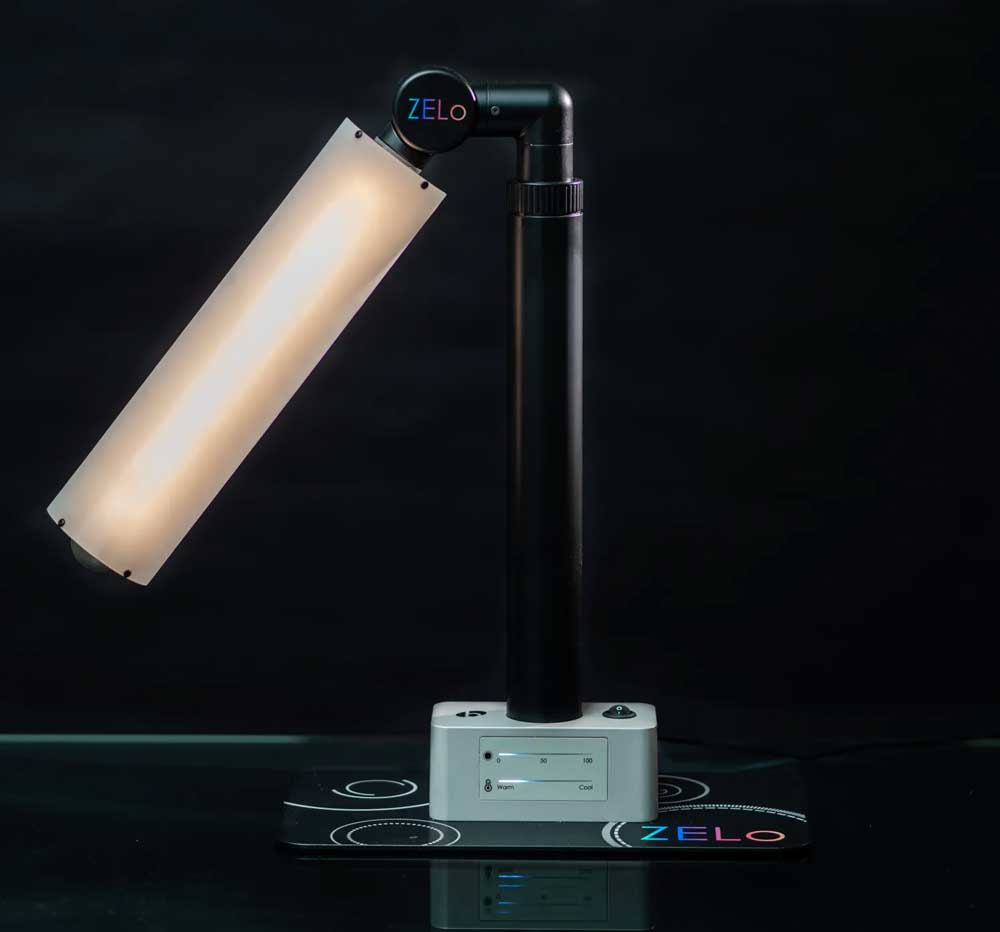
ZELo
Brightline’s ZELo is a desktop studio light that is perfect for videoconferencing and enhanced personal lighting in any workspace.
With variable color temperature, ZELo can range from warm light (2,700 degrees) to daylight (6,500 degrees) and blend with any ambient room light environment. You can adjust the ZELo to create a flattering lighting angle wherever your work takes you, and the ZELo’s telescoping arm clears most desktop and laptop monitors. Best of all, ZELo folds for easy transport and storage.
When it comes to productivity and teamwork, shared office spaces seem to be here to stay. To achieve the best lighting for your team huddles, contact California Lighting Sales today.
Download Brightline Huddle Room Lighting Kit »